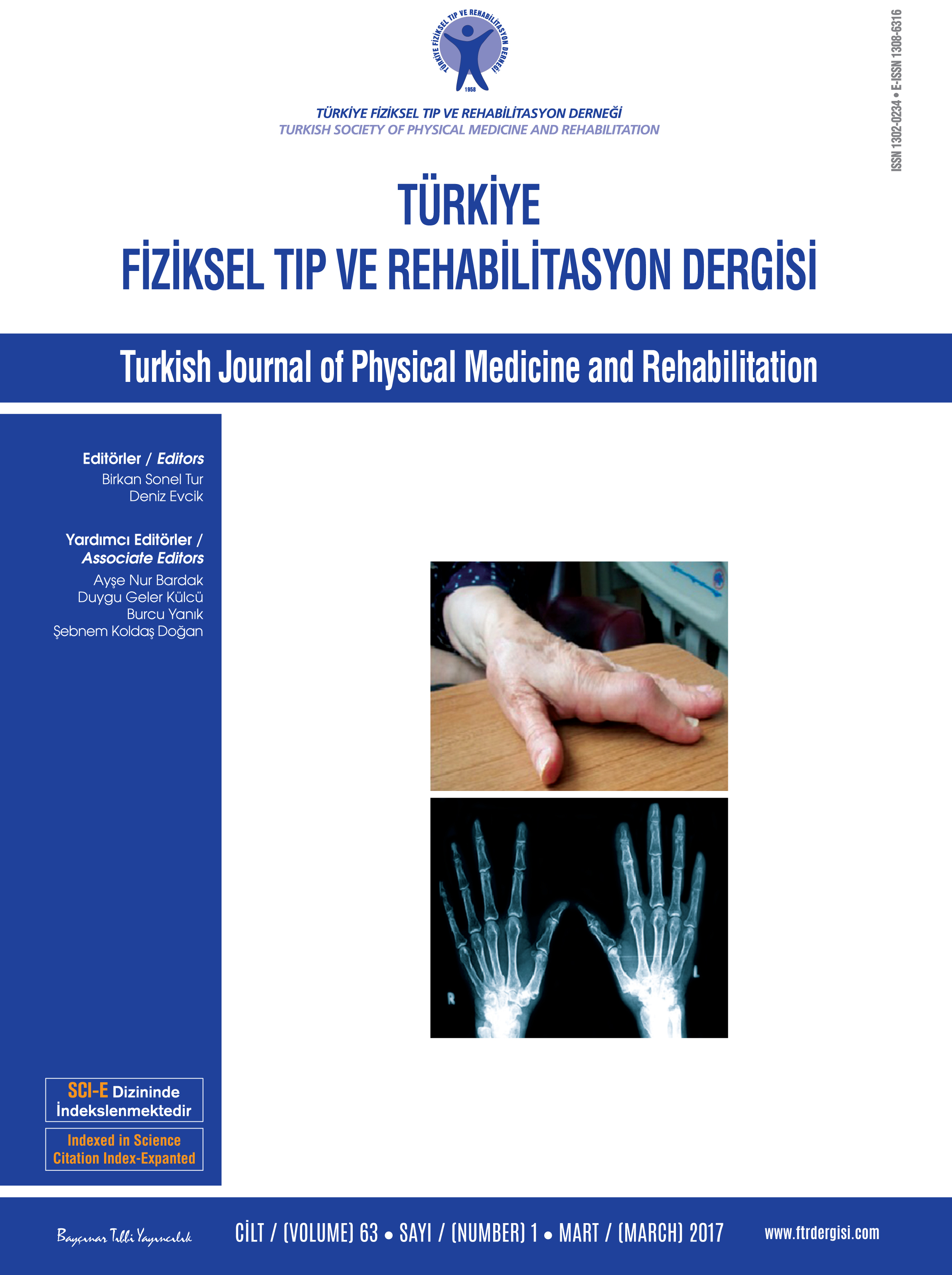Evaluation of efficacy of botulinum toxin A to gastrocnemius muscle A in patients with hemiplegic cerebral palsy with equinus deformity of ankle using three-dimensional gait analysis
2 Metin Sabancı Baltalimanı Kemik Hastalıkları Eğitim ve Araştırma Hastanesi, Yürüme Analizi Laboratuvarı, Fiziksel Tıp ve Rehabilitasyon Kliniği, İstanbul, Türkiye DOI : 10.5606/tftrd.2017.00936 Objectives: This study aims to evaluate the efficacy of botulinum toxin A (BtA) injection applied to the gastrocnemius muscle in children with hemiplegic cerebral palsy (CP).
Patients and methods: Between January 2014 and December 2014 nine patients (8 boys, 1 girl; mean age 6 years; range 5 to 10 years) who were diagnosed with hemiplegic CP in our clinic were included in this study. All patients underwent physical examination and computerized three-dimensional gait analysis before and at three and six months after the administration of the BtA.
Results: Increased the stride length and walking speed prior to treatment decreased after BtA injection at three months. At six months, increased walking speed and stride length were observed, although they did not return to their baseline values. Significant improvements at the knee flexion at the initial contact (K1), ankle plantar flexion at the initial contact (A1), maximum ankle dorsiflexion during the stance phase (A2), and maximum ankle dorsiflexion moment (Am1) after BtA injection, which were maintained up to six months.
Conclusion: Our study results show that the position of the ankle and knee during the heel strike is significantly improved after BtA injection and this improvement can be maintained up to six months.
Keywords : Botulinum toxin A; gait analysis; kinematic; kinetic

















